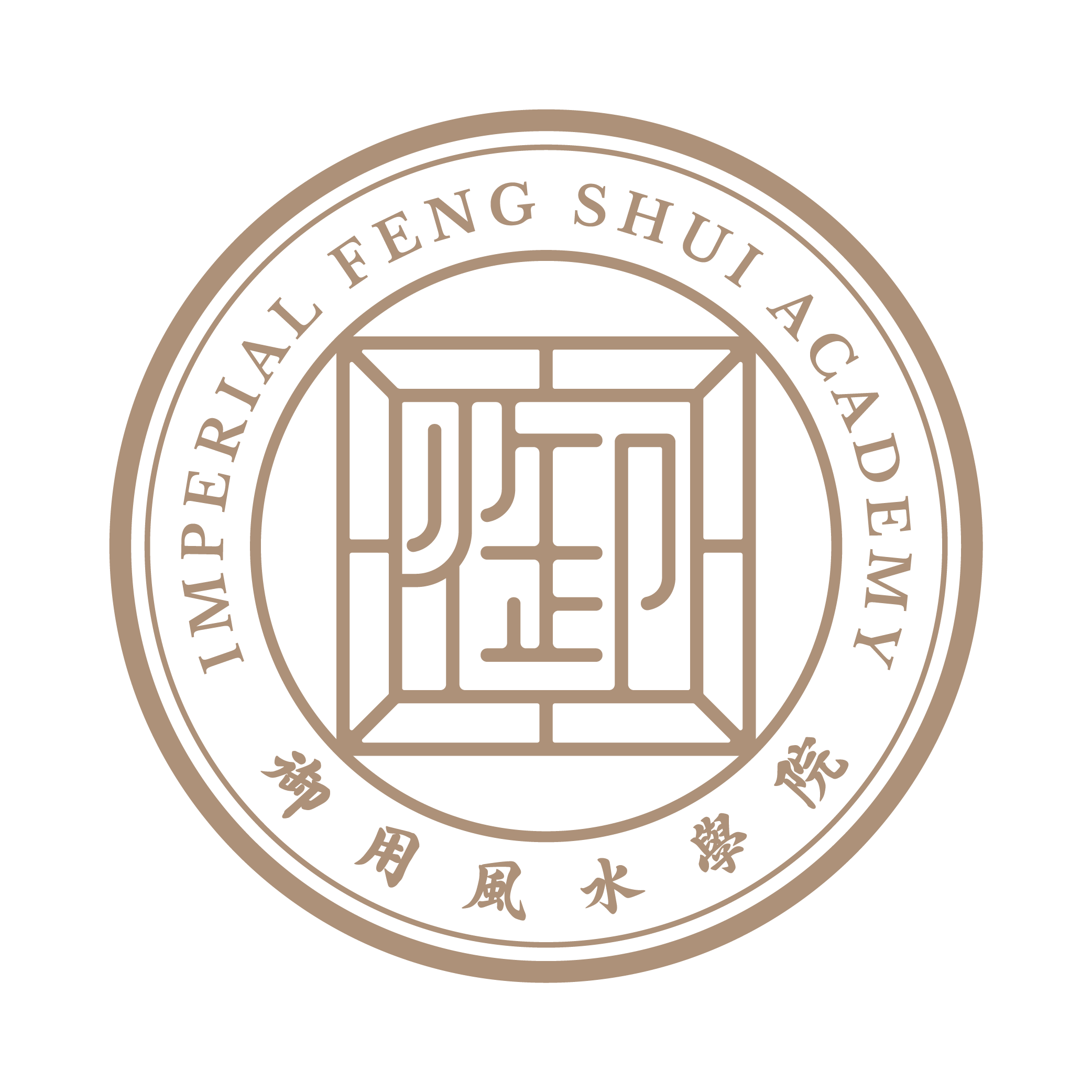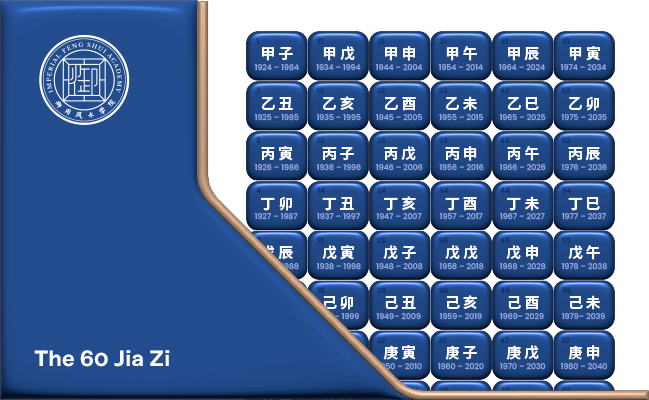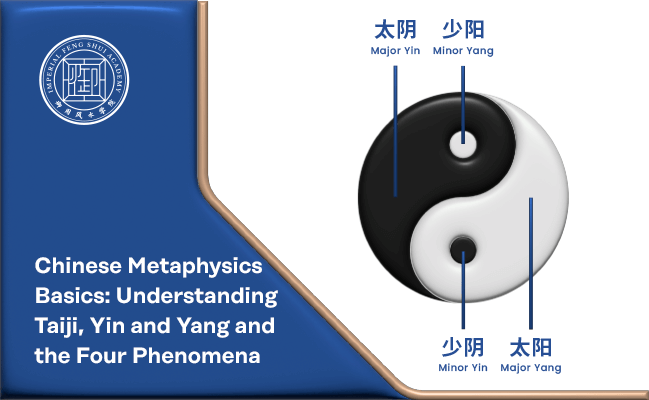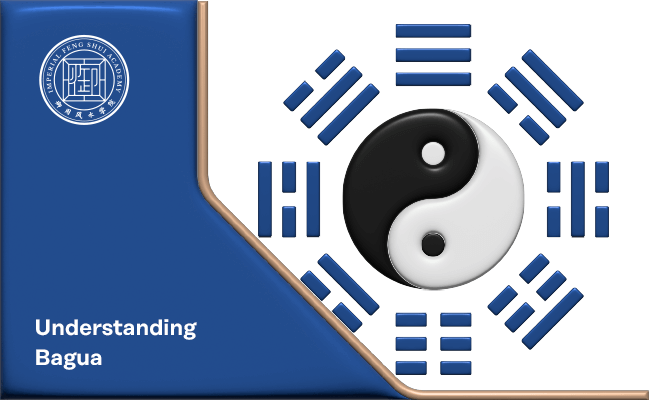The 60 Jia Zi, also known as the Sexagenary Cycle, the Stem-Branch Cycle, or Gan Zhi (干支), is a 60-year calendar system based on combinations of the 10 Heavenly Stems and 12 Earthly Branches in Chinese metaphysics. Each year is named by pairing a Heavenly Stem with an Earthly Branch, starting with Jia Zi (甲子) — a combination of Jia (甲) from the Heavenly Stems and Zi (子) from the Earthly Branches.
Historical Significance of the 60 Jia Zi

The Sexagenary Cycle has historical importance in timekeeping within China and the broader East Asian cultural context. Its earliest documented use for recording days dates back to the Shang oracle bones from the late second millennium BC, with the practice of recording years beginning in the mid-3rd century BC.
This calendar system served multiple purposes:
- Recording Time: Similar to how we use decades, centuries, and millennia, the Sexagenary Cycle provides a systematic way to describe and record specific years. Each year in the cycle is characterised by a unique combination of a Heavenly Stem and an Earthly Branch.
- Chronology: In Chinese historical records, events are often dated using the Sexagenary Cycle, making it an indispensable tool for historians and scholars when establishing chronological order.
- Destiny Analysis: In Chinese astrology, the year, month, date, and time of birth are each
represented by a specific combination from the Sexagenary Cycle. This forms the basis for Bazi, a foundational component of Imperial Feng Shui, used to predict an individual’s character, influences, and potential life trajectory. - Agriculture: The cycle has historically played a vital role in agricultural planning, helping farmers determine the correct times for planting, harvesting, and other agricultural activities based on the specific characteristics associated with each year.
- Cultural Significance: Beyond practical applications, the Sexagenary Cycle holds cultural and symbolic significance in East Asian cultures. It has influenced art, literature, and philosophy, reflecting the deep-rooted connection between the cycle and the cultural fabric of the region.
Applications of the 60 Jia Zi
The combination of Heavenly Stems and Earthly Branches follows a pattern of pairing elements with the same polarity. Yin is paired with Yin elements, and Yang is paired with Yang elements, ensuring compatibility and preventing conflicts.
Once the ten Heavenly Stems are matched with the twelve Earthly Branches, a distinct cycle known as “Xun” (旬) is established, measuring a decade within the 60 Jia Zi system. This results in six notable subsets: Jia Zi (甲子), Jia Yin (甲寅), Jia Chen (甲辰), Jia Wu (甲午), Jia Shen (甲申), and Jia Xu (甲戌), structuring and categorising the cycle.
Jia Zi Decade Example:
- Jia Zi (甲子)
- Yi Chou (乙丑)
- Bing Yin (丙寅)
- Ding Mao (丁卯)
- Wu Chen (戊辰)
- Ji Si (己巳)
- Geng Wu (庚午)
- Xin Wei (辛未)
- Ren Shen (壬申)
- Gui You (癸酉)
Two Earthly Branches, Xu (戌) and Hai (亥), remain unpaired in the Jia Zi Decade, illustrating the concept of “Emptiness and Void” or Kong Wang (空亡). This concept refers to the diminished energy of these unpaired branches.
Emptiness and Void in Chinese Metaphysics
The concept of Emptiness and Void applies across various fields, including Qi Men Dun Jia, Imperial Feng Shui, and Bazi.
Qi Men Dun Jia (奇门遁甲): If the outcome sector is paired with Emptiness and Void, it signifies that no meaningful outcome can be derived from that sector. An Imperial Feng Shui practitioner would then employ the Shifting Palace technique, using principles of Early Heaven and Later Heaven Bagua to identify an alternative outcome sector.
Bazi (八字): Emptiness and Void, expressed as “DE” in a Bazi chart, signifies a sense of emptiness, fear, and underachievement. DE in a Bazi chart may indicate a lack of direction in life and highlight potential emotional pitfalls.
- Year Pillar: DE suggests a solitary youth with limited contact with grandparents and few close friendships but ample opportunities for self-discovery.
- Month Pillar: DE may indicate a sense of unfulfillment in professional life, despite apparent success, suggesting a lack of deep satisfaction.
- Hour Pillar: DE can signify challenges related to having children or difficulties in establishing close connections with them. It may also point to issues in managing staff or colleagues, indicating potential conflicts in interpersonal relationships.
The 60 Jia Zi, or Sexagenary Cycle, is a vital aspect of Chinese metaphysics, playing significant roles in timekeeping, astrology, agriculture, and cultural practices. Understanding this cycle, along with the concepts of Emptiness and Void, offers profound insights into historical events, personal destiny, and the natural order. This knowledge continues to influence various aspects of life, from personal growth to agricultural planning, reflecting the enduring significance of this ancient system.




